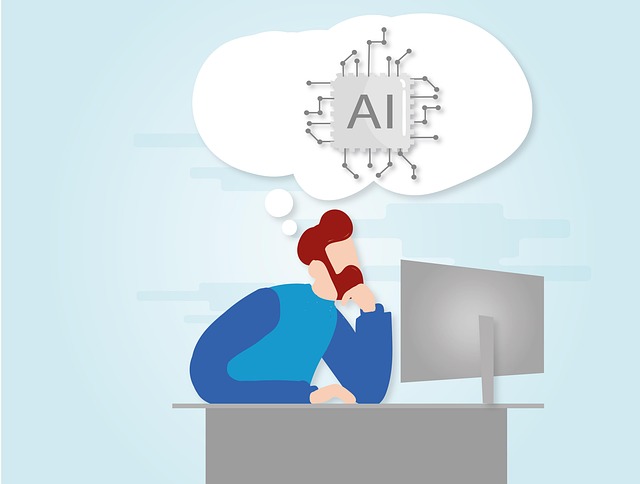AI assistants, powered by NLP and ML, have evolved from simple tools to empathetic companions understanding user needs deeply. They personalize interactions, foster connection, and offer support through active listening. Conversational AI breaks language barriers, enhances accessibility, and includes diverse users with various abilities. Contextual awareness allows these assistants to anticipate needs, making tech more intuitive and efficient. Continuous learning through user feedback refines their capabilities over time, bridging technology gaps across sectors.
Conversational AI is transforming tech interactions, bridging gaps and fostering more natural, intuitive communication. From understanding user needs through empathy to breaking language barriers via Natural Language Processing (NLP), these technologies personalize experiences, enhance accessibility, and provide contextually relevant responses.
AI assistants are evolving through continuous learning, incorporating feedback to better serve diverse users. This article explores the key elements driving this revolution in human-computer interaction, highlighting the potential of ai assistants to create more inclusive and effective tech experiences for all.
- Understanding User Needs: AI Assistant Empathy
- Breaking Language Barriers: Natural Language Processing
- Personalization: Tailoring Interactions to Users
- Accessibility: Making Tech Inclusive for All
- Contextual Awareness: Smart Relevance in Conversations
- Continuous Learning: Evolving with User Feedback
Understanding User Needs: AI Assistant Empathy

AI assistants have evolved beyond mere toolsets, transforming into empathetic companions that truly understand user needs. By leveraging natural language processing and machine learning, these assistants can interpret complex emotions and contextual cues, ensuring interactions are tailored to individual preferences and requirements. This level of personalization fosters a sense of connection, making users feel heard and valued.
Through active listening and adaptive responses, AI assistants demonstrate empathy by acknowledging user sentiments and offering relevant support. They can provide comfort during difficult situations, offer guidance when faced with complex decisions, or simply engage in casual conversation to brighten someone’s day. This emotional intelligence not only enhances user satisfaction but also paves the way for more meaningful and productive tech interactions.
Breaking Language Barriers: Natural Language Processing

Conversational AI, powered by natural language processing (NLP), is transforming the way we interact with technology. By breaking down language barriers, NLP enables machines to understand and interpret human language, facilitating seamless communication between users and ai assistants. This capability is particularly impactful in diverse, multicultural settings where traditional user interfaces might not cater to all languages or dialects.
With NLP, ai assistants can now process and respond to queries in multiple languages, making digital services more accessible and inclusive. This advancement not only enhances the user experience but also opens up opportunities for businesses to expand their reach globally. By leveraging NLP, companies can create more universal, intuitive, and user-friendly interfaces that bridge gaps in tech interactions, fostering a more connected and diverse digital landscape.
Personalization: Tailoring Interactions to Users

Personalization is a key aspect where AI assistants excel and bridge the gap in user expectations. By leveraging machine learning algorithms, these assistants can learn user preferences, behaviors, and interactions over time. This allows for tailored responses and suggestions that feel intuitive and human-like. For example, an AI assistant can remember a user’s coffee order preference and suggest it when they wake up in the morning or recommend products based on past purchases, enhancing the overall user experience.
This level of customization creates a more engaging and satisfying interaction dynamic. Users no longer have to provide explicit instructions for simple tasks; instead, the AI assistant anticipates their needs, making technology more accessible and user-centric. Personalization also fosters trust and loyalty, as users feel understood and valued, encouraging ongoing engagement with these intelligent systems.
Accessibility: Making Tech Inclusive for All

In today’s digital landscape, technology has become an integral part of our daily lives, offering unprecedented convenience and efficiency. However, it’s crucial to recognize that not everyone has equal access to or can fully utilize these technological advancements. Here, Conversational AI steps in as a game-changer. An AI assistant, with its intuitive nature and ability to understand natural language, can bridge the gap by providing an accessible interface for users of all abilities.
By employing simple voice commands or text inputs, individuals with visual impairments can interact with technology just like anyone else. Moreover, Conversational AI ensures that tech interactions are inclusive and user-friendly, breaking down barriers and fostering a more diverse and equitable digital environment. This accessibility is a significant step towards making technology a powerful tool for everyone, regardless of their physical or cognitive abilities.
Contextual Awareness: Smart Relevance in Conversations

Conversational AI assistants are transforming interactions with technology by bringing contextual awareness into the fold. Unlike traditional systems that operate based on pre-set commands and menus, these intelligent assistants understand the nuances of human language and adapt their responses accordingly. By recognizing context, they can provide relevant and personalized answers, making tech more accessible and user-friendly.
Contextual awareness allows AI assistants to gather information from previous interactions, user preferences, and even environmental cues, enabling them to anticipate needs and deliver precise results. This smart relevance ensures that conversations with technology are natural and intuitive, fostering a sense of ease and efficiency in tasks ranging from simple queries to complex problem-solving.
Continuous Learning: Evolving with User Feedback

Conversational AI assistants, like any intelligent system, are not static; they evolve through continuous learning. This process is significantly influenced by user interactions and feedback, which serve as vital data points for improvement. Each conversation provides an opportunity to refine responses, enhance understanding, and adapt to diverse user needs.
User feedback plays a crucial role in shaping the capabilities of AI assistants. By analyzing and incorporating this feedback, these assistants can better interpret intent, offer more accurate information, and provide tailored solutions. This dynamic learning ensures that over time, they become increasingly adept at bridging gaps in technology interactions, making them indispensable tools in various sectors.






